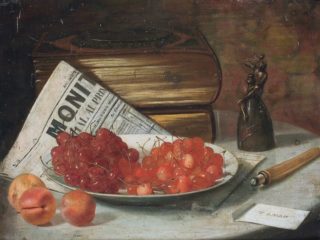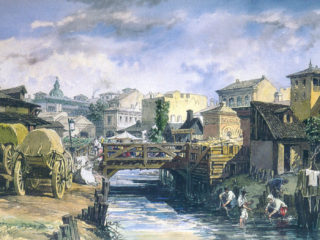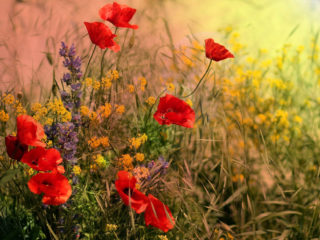Romania is a country with strong agrarian roots. It makes perfect sense, then, that its most celebrated customs rely on these origins, with winter traditions presumably being the most important, both in number and in significance.
While the contemporary approach to winter—especially around Christmas time— focuses on coziness, candle lights and everything Hygge, Likke, and all that Scandinavian jazz, it’s important to know that the local traditions are a mix of pre-Christian beliefs and rituals, and religious celebrations.
Nativity Fast
The winter traditions actually start in late autumn, with Nativity Fast, practiced by the Orthodox and Eastern Catholic Churches, and similar to Advent, observed in Western countries. The 40 day period before Christmas is a time of abstinence and penance, when people usually refrain from eating meat and other animal products. By tempering the body’s desire for food, it is believed that other earthly desires can be tempered as well.
Saint Nicholas
A protector of the poor, Saint Nicholas is celebrated on December 6th. With time, the celebration has become a gift-giving occasion. Per tradition, on the night of the 5th, a character similar to Santa Claus, popular all over Central Europe and known as Moș Nicolae in Romania, brings gifts—usually sweets—to the children (and adults, because who can resist?) and leaves them in their boots, provided they have been cleaned first and the kids behaved well all year round. If they haven’t, a symbolic decorated rod is left instead.
Pig Slaughtering
In modern days we might raise a concerned eyebrow in regard to this tradition, but, in all honesty, customs take hundreds or thousands of years to make and probably a lot more to break, especially those sprung up out of necessity. An ancient custom popular all over Europe, pig-slaughtering takes place on St. Ignatius Day (December 20th) or around that date and it involves a lot of preparation and many hands available, so that the meat, sausages and other pork goodies are ready for the Christmas feast.
Christmas
Of utmost religious relevance for the Romanians, Christmas, Crăciunul, is a get-together time, accompanied by both religious and secular customs. The Christmas tree is usually decorated on the 24th of December and lasts until the first days of January. Fir trees were considered sacred by the Dacians and had—still have, in some parts of Romania—a very strong symbolic relevance at weddings and funerals. On the morning of the 25th everybody finds gifts under the tree—most likely a trace of the ancient Roman feast Saturnalia—or the lucky ones might meet Santa some place or another.
Christmas is also an opportunity for elaborate family meals. With fasting now over and the pigs slaughtered, pork is in abundance, accompanied by other traditional foods and drinks, such as the famous sarmale or cozonac.
Carols are probably one of the most joyous parts of the holiday and one of the best preserved winter traditions. Throughout December it is very common to have carol concerts held in most cities. The oldest Romanian carols are secular and talk about the family life, the village life, and old rituals, usually ending with good wishes, while the religious carols are newer and inspired by biblical and other religious texts. In the morning of the Christmas Eve, children are the ones who start carolling, with adults joining in later on. In the rural parts of the country the carollers are wearing their festive traditional clothes.
The New Year
While the New Year’s Eve is yet another reason for celebration, with hearty meals and all-night parties, it’s the numerous ceremonies and superstitions related to the renewal of the year that draw the attention. Besides carolling, Plugușorul, The Plow, is probably one of the most renowned winter traditions. The ancient agrarian custom is somehow resemblant in meaning to the English Plough Sunday and celebrated on the last day of the year. Groups of people—traditionally men—go from house to house to wish friends and neighbours a fruitful new year, good weather and good luck, by reciting a lengthy fixed poem and being accompanied by noisy drums, whips, bells, and lots of shouting aimed at chasing away the bad spirits.
Similarly, Sorcova, Buhaiul, and other related songs and wishes, many accompanied by dances, are truly original and appealing. Certain rituals (The Goat, The Bear, The Stag), performed by masked people, are magical ceremonials very similar to theatre plays and involve a main character—the aforementioned animals—that dies and then it’s brought back to life, in a ceremony symbolising the end of the present year and the beginning of a new one, and the purification of the soil for the following crops.
As it often happens, most of these customs—especially the traditional carolling, the wishes and the rituals—are best preserved in the countryside, where they are passed on from generation to generation.
Featured image: Ciprian Pardău / Unsplash











